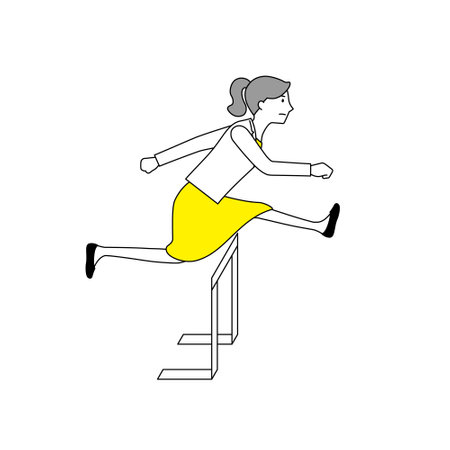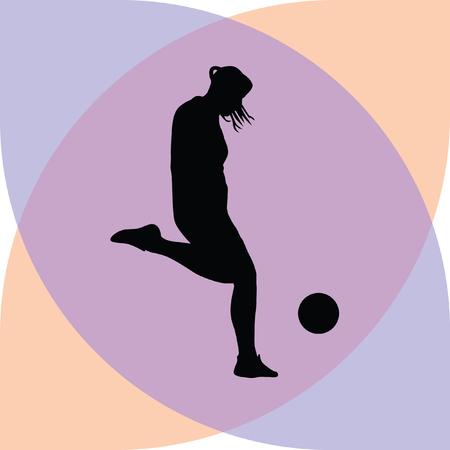1. Overview of Common Sports Injuries in the U.S.
Sports are a big part of American culture, from youth leagues to college teams and professional sports. With so many people participating in physical activities, sports injuries are quite common in the United States. Let’s take a closer look at which injuries happen most often, who gets them, and why certain sports have specific injury risks.
Who Gets Injured?
Anyone who plays sports can get injured, but some groups are more likely to experience certain types of injuries. Here’s a general breakdown:
| Group | Common Injuries |
|---|---|
| Youth Athletes (ages 5-17) | Sprains, strains, growth plate injuries |
| College Athletes (ages 18-22) | Knee injuries (ACL tears), shoulder dislocations |
| Adults (ages 23+) | Tendinitis, overuse injuries, muscle tears |
Risk Factors for Sports Injuries
Certain factors increase the chance of getting hurt while playing sports. Some important risk factors include:
- Poor conditioning or lack of warm-up
- Improper technique or form
- Playing on unsafe surfaces
- Lack of protective equipment
- Pushing through pain or fatigue
Popular Sports and Their Linked Injuries
Different sports tend to cause different types of injuries. Here is a quick guide to some popular American sports and the injuries most often seen with each:
| Sport | Frequent Injuries |
|---|---|
| Football | Knee ligament tears (like ACL), concussions, ankle sprains |
| Basketball | Ankle sprains, finger fractures, knee injuries (meniscus tears) |
| Baseball/Softball | Shoulder rotator cuff strains, elbow ligament issues (like “Tommy John” injury) |
| Soccer | Knee and ankle sprains, muscle pulls (hamstring/groin) |
| Running/Track & Field | Stress fractures, shin splints, Achilles tendinitis |
A Closer Look at Injury Types
- Sprains: Stretching or tearing ligaments (common in ankles and knees)
- Strains: Overstretching muscles or tendons (often seen in hamstrings and back)
- Tendinitis: Inflammation from overuse (shoulders, elbows, knees)
The Role of Physical Therapy
No matter what type of injury occurs, physical therapy plays a crucial role in helping athletes recover and get back to their favorite activities safely. In the following sections, we’ll explore common treatment protocols and how therapy helps support healing and prevent future injuries.
2. Identifying Signs and Symptoms of Major Sports Injuries
Knowing how to spot early warning signs of common sports injuries can make a big difference in recovery time and overall health. Whether you play basketball, football, soccer, or just enjoy jogging, recognizing symptoms quickly helps prevent injuries from getting worse. Let’s break down the most frequent sports injuries and what signs to watch for.
Common Sports Injuries: Early Warning Signs
| Injury Type | Typical Signs & Symptoms |
|---|---|
| Sprains (e.g., ankle, wrist) | Pain around the joint, swelling, bruising, limited movement, sometimes a popping feeling at the moment of injury |
| Strains (e.g., hamstring, back) | Muscle pain or tenderness, sudden pain during activity, muscle weakness or spasms, swelling or bruising |
| ACL Tears (knee injury) | A loud pop or “popping” sensation in the knee, severe pain and rapid swelling, loss of range of motion, feeling of instability when standing or walking |
| Rotator Cuff Injuries (shoulder) | Dull ache deep in the shoulder, difficulty reaching behind your back or overhead, arm weakness, disturbed sleep due to shoulder discomfort |
| Concussions (head injury) | Headache or pressure in the head, confusion or feeling “foggy,” dizziness, nausea or vomiting, sensitivity to light/noise, memory problems |
How to Recognize Early Symptoms in Real Life Situations
Ankle Sprains: If you step awkwardly during a pickup basketball game and immediately feel pain and swelling around your ankle, it’s likely a sprain. Walking might be difficult and you may notice bruising within hours.
Hamstring Strains: During a sprint or sudden movement on the field, if you feel a sharp pain in the back of your thigh and have trouble continuing activity, suspect a strain.
Knee ACL Tear: After making a quick pivot while playing soccer or football, if you hear a pop in your knee followed by intense pain and swelling within an hour, this is a red flag for an ACL tear.
Shoulder Rotator Cuff Injury: If you’re throwing a baseball or swimming laps and begin to feel persistent shoulder pain that doesn’t go away with rest—or you can’t lift your arm comfortably—rotator cuff issues could be developing.
Concussion: Any blow to the head during contact sports like football or even from falling off a bike can cause concussion symptoms. Watch for headaches, confusion, trouble remembering plays or recent events, and unusual sleepiness.
When to Seek Medical Attention
- If pain is severe or does not improve with rest and basic care
- If you experience numbness, tingling, or significant weakness in an injured area
- If you suspect a concussion (loss of consciousness is not required)
- If there is visible deformity or inability to move a joint normally
- If swelling increases rapidly after injury
The Importance of Early Recognition
Catching these warning signs early means you can start physical therapy protocols faster—helping reduce complications and speeding up your return to play. Don’t ignore aches and pains! Listen to your body and reach out for professional advice when needed.

3. Evidence-Based Physical Therapy Protocols
Physical Therapy: What Works Best for Common Sports Injuries?
When it comes to sports injuries, the right physical therapy approach can make all the difference in recovery time and long-term outcomes. Physical therapists in the United States rely on evidence-based practices, which means using treatments and exercises that are backed by scientific research. Let’s look at some of the current best practices for treating common sports injuries like ankle sprains, ACL tears, rotator cuff injuries, and tennis elbow.
Recommended Exercises for Recovery
| Injury | Exercise Type | Purpose |
|---|---|---|
| Ankle Sprain | Balance and proprioception drills (e.g., standing on one leg), resistance band exercises | Restore stability and strength to prevent re-injury |
| ACL Tear (post-surgery) | Closed-chain exercises (mini squats, step-ups), hamstring and quad strengthening | Regain knee function and protect repaired ligament |
| Rotator Cuff Injury | Scapular stabilization, isometric shoulder exercises, gentle range-of-motion movements | Improve shoulder mobility and reduce pain |
| Tennis Elbow (Lateral Epicondylitis) | Eccentric wrist extension exercises, grip strengthening | Promote tendon healing and restore arm function |
Manual Therapy Techniques Backed by Research
Hands-on techniques can help reduce pain and improve movement. Here are some commonly used manual therapy methods:
- Joint mobilizations: Gentle movements to improve joint flexibility, often used after ankle sprains or knee injuries.
- Soft tissue massage: Helps decrease muscle tightness and break up scar tissue around injured areas.
- Trigger point release: Used for muscle knots, especially around the shoulder and elbow.
Modalities Supported by Science
Certain therapeutic tools can help speed up recovery when used alongside exercise and manual therapy. According to recent studies, these modalities have shown benefits:
- Cryotherapy (ice packs): Reduces swelling and pain immediately after injury.
- Therapeutic ultrasound: May promote tissue healing in certain soft-tissue injuries.
- Kinesiology taping: Can provide support and reduce discomfort during activity.
- Electrical stimulation (TENS): Helpful for pain control in both acute and chronic stages.
The Importance of Individualized Care Plans
No two athletes recover exactly the same way. Physical therapists create personalized protocols based on each person’s age, sport, injury severity, and overall health. This tailored approach ensures a safe return to play while reducing the risk of future injuries. Always consult a licensed physical therapist who stays up-to-date with the latest research to get the best care possible.
4. Real-Life Case Examples from the American Sports Scene
High School Athlete: ACL Tear in a Soccer Player
Meet Emily, a 16-year-old varsity soccer player from Texas. During a crucial playoff game, she made a sudden pivot and felt a pop in her knee—classic signs of an ACL tear. Emily’s injury management involved:
| Phase | Physical Therapy Focus | Duration |
|---|---|---|
| Post-Surgery | Pain management, swelling reduction, gentle range-of-motion exercises | 0-2 weeks |
| Early Rehab | Strengthening quadriceps and hamstrings, balance training | 3-8 weeks |
| Advanced Rehab | Agility drills, sport-specific movements, return-to-play assessment | 9-20 weeks |
Emily worked closely with her school’s physical therapist and was able to return to full competition the next season, stronger and more confident.
College Athlete: Rotator Cuff Injury in a Baseball Pitcher
James, a college sophomore pitching for his university in California, started experiencing shoulder pain mid-season. An MRI confirmed a partial rotator cuff tear. His recovery plan included:
- Initial Rest: Two weeks off throwing to reduce inflammation.
- Physical Therapy: Gradual strengthening of the rotator cuff muscles, scapular stabilization exercises, stretching routines.
- Throwing Program: A step-by-step progression from light tosses to full-speed pitches over 10 weeks.
With diligent rehab and support from his athletic trainer, James returned to the mound by the playoffs and improved his pitching mechanics to help prevent future injuries.
Pro Athlete: Ankle Sprain in an NBA Player
An NBA guard suffered a severe ankle sprain during a televised game. Here’s how the team’s medical staff managed his comeback:
| Step | Description | Status Checkpoint |
|---|---|---|
| Immediate Care | Icing, compression wrap, elevation; no weight-bearing first 48 hours. | Pain & swelling reduced by day 3. |
| Rehabilitation Phase 1 | Ankle mobility exercises, stationary bike workouts. | No pain during movement by week 1. |
| Rehabilitation Phase 2 | Strengthening calf muscles, balance board training. | Able to jog by week 2. |
| Return-to-Play Drills | Lateral movements, jumping drills, on-court practice with tape support. | Cleared for full games at week 4. |
This structured protocol helped minimize downtime and ensured a safe and speedy return to professional play. These real-world stories show that effective injury management and physical therapy can lead athletes at every level back to peak performance while reducing the risk of reinjury.
5. Guidance for Return-to-Play and Injury Prevention
Making Safe Return-to-Sport Decisions
Returning to play after a sports injury isn’t just about feeling ready—it’s about making sure your body is fully healed to avoid re-injury. Here are some expert tips for athletes, coaches, and parents:
- Clearance from a Healthcare Provider: Always get an official okay from your doctor or physical therapist before resuming sports.
- Pain-Free Movement: Ensure the athlete can move without pain, swelling, or instability in the injured area.
- Full Range of Motion and Strength: Compare both sides of the body. The injured side should have equal strength and flexibility as the uninjured side.
- Functional Testing: Perform sport-specific drills (e.g., running, jumping, pivoting) safely and confidently.
Return-to-Play Checklist
| Requirement | Description |
|---|---|
| No Pain or Swelling | The athlete should be free of symptoms during rest and activity. |
| Normal Range of Motion | The joint moves as well as the uninjured side. |
| Strength Restored | Muscle strength matches the healthy side. |
| Sport-Specific Skills | Athlete can safely perform actions needed for their sport. |
| Medical Clearance | A doctor or licensed therapist has approved return to play. |
Injury Prevention Strategies
Preventing future injuries is just as important as healing. Here are easy ways to help keep athletes safe:
- Warm Up Properly: Start every practice and game with dynamic stretching and light aerobic activity.
- Use Correct Technique: Coaches should emphasize good form and safe mechanics during all drills and games.
- Wear Appropriate Gear: Use protective equipment like helmets, pads, or braces when necessary.
- Don’t Ignore Minor Injuries: Early treatment can stop small problems from becoming serious ones.
- Build in Rest Days: Schedule regular breaks to let muscles recover and grow stronger.
- Create a Supportive Team Culture: Encourage open communication about pain or discomfort—no “playing through pain.”
Quick Tips for Coaches, Parents, and Athletes
| Who | What To Do |
|---|---|
| Coaches | Monitor player fatigue, teach safe techniques, create warm-up routines. |
| Parents | Watch for signs of overuse or pain, encourage rest days, communicate with coaches. |
| Athletes | Speak up if something hurts, follow rehab plans, focus on proper form and recovery. |
Your Role in Recovery & Prevention
No matter if you’re an athlete, coach, or parent—knowing these basic guidelines helps everyone stay safer on the field and get back in the game stronger than before. Consistent communication, patience with recovery, and sticking to proven prevention strategies make all the difference!


